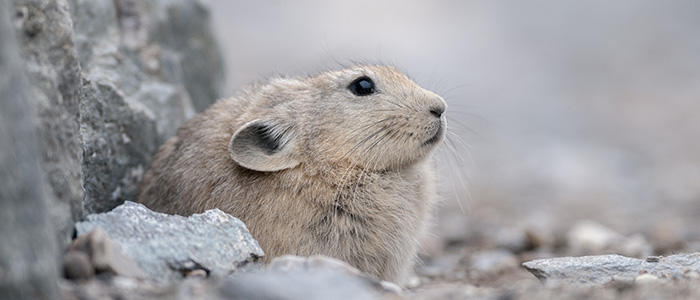New microbes discovered in a baby marmoset, Tibetan Plateau pika and northern bald ibis
Posted on September 10, 2019 by Matt Bassett
Each month, the Microbiology Society publishes the International Journal of Systematic and Evolutionary Microbiology (IJSEM), which details newly discovered species of bacteria, fungi and protists. Here are some of the new species that have been discovered and the places they’ve been found.
This month, a group of scientists discovered a new species from the genus Inhella. The scientists isolated the species from a freshwater pond at a crocodile farm in Chaozhou Township, Taiwan. The species was named Inhella crocodyli.

Mammals were the source of several new microbes this month. A project was started in 2015 aiming to study the microflora diversity of the Tibetan Plateau wildlife. During the project, Neisseria weixii was isolated from the Tibetan Plateau pika (Ochotona curzoniae), small, mountain-dwelling mammals that are similar to rabbits. Also in Tibet, researchers isolated Fudania jinshanensis from the faeces of the Tibetan antelope (Pantholops hodgsonii), a species that was hunted to near extinction for their fur.

The last microbe found on a mammal this month came from a baby common marmoset (Callithrix jacchus), a group of researchers isolated Bifidobacterium jacchi from the faeces of the marmoset. Bifidobacteria are very common inhabitants of the gastro-intestinal tract of mammals and birds and are thought to promote health benefits in their host, such as maintaining a gut microbiota balance, reducing infection and modulating the immune system.
In addition to mammals, birds and fish were the source of new microbes this month. The northern bald ibis (Geronticus eremita) is a critically endangered species, with only about 550 wild birds remaining. Researchers discovered three new species from the choanae, or internal nostril, of an ibis, naming them Corynebacterium choanae, Corynebacterium pseudopelargi, and Corynebacterium gerontici. The Nile tilapia (Oreochromis niloticus) is a fish native to Africa, and a group of scientists isolated Empedobacter tilapiae from the intestine of the tilapia.
Microbes are able to survive in some of the most extreme environments on earth. This month, a group of researchers discovered novel actinobacteria Kribbella turkmenica from desert soil, collected from the Karakum Desert in Turkmenistan. On the opposite side of the temperature scale, scientists isolated a novel psychotolerant bacterium from Arctic soil sampled from Nunavut, Canada. In recognition of the region where they discovered the new species, researchers are naming it Glaciihabitans arcticus.
Chinese pickle is a traditional food made by pickling various fruits and vegetables in salt and brine. These pickles are known to be rich in lactic acid bacteria, but the diversity of the bacteria hasn’t been investigated extensively; to date, only six novel species have been isolated. However, this month scientists have discovered an additional 11 species called: Lactobacillus jixianensis, Lactobacillus baoqingensis, Lactobacillus jiayinensis, Lactobacillus zhaoyuanensis, Lactobacillus lindianensis, Lactobacillus huananensis, Lactobacillus tangyuanensis, Lactobacillus fuyuanensis, Lactobacillus tongjiangensis, Lactobacillus fujinensis and Lactobacillus mulengensis.
Last for this month is a new species of bacteria called Indiicoccus explosivorum; the research group who discovered it named it in recognition of the site they sampled in Panchkula, India, which was contaminated by explosives. The bacterium was reported as having pink-coloured colonies.

